Home » Researchers in Residence scheme » Tranche 2 projects
Tranche 2 projects
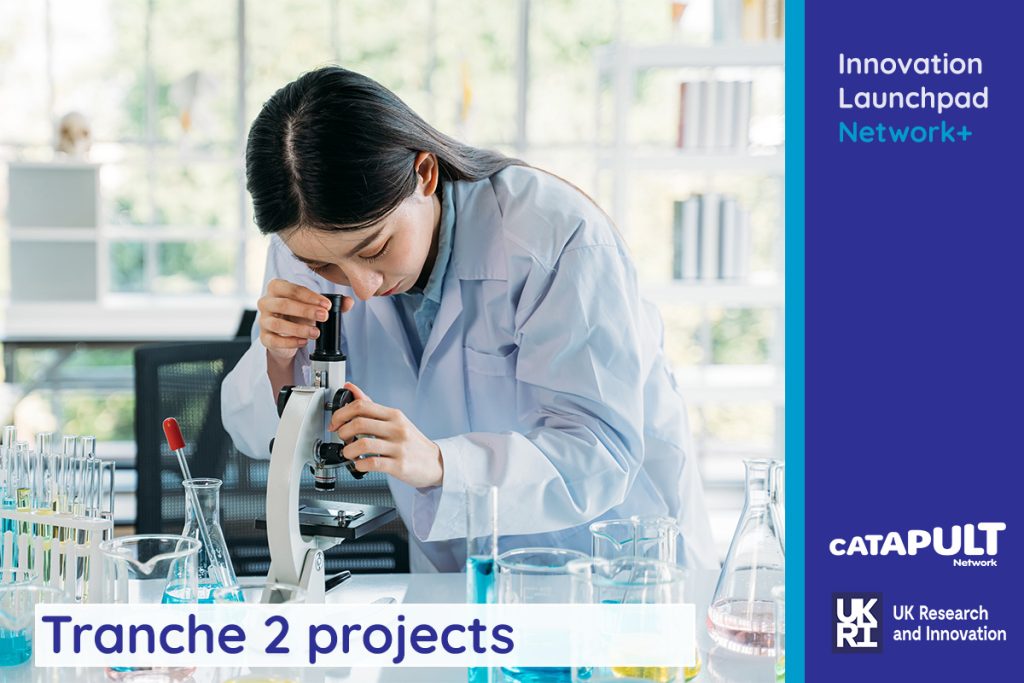
The second round of academics for the Innovation Launchpad Network’s Researcher in Residence scheme have been confirmed, with 39 world class projects set to make a huge impact to industry and to the UK’s strategic goals across three themes: Net Zero, Healthcare and Resilience.
Net Zero

This project will help reduce the levelised cost of green hydrogen by modelling, implementing and demonstrating novel control of green hydrogen systems through extension of previous proof of concept work I have published alongside the Offshore Renewable Energy Catapult in this area.
Whilst green hydrogen is a potential solution to the problem of difficult to electrify energy use, the necessary integration of renewable energy with hydrogen electrolysis requires system-wide control solutions to drive down the levelised cost of hydrogen and make it economically viable. The project will create novel models of, and system-wide controllers for, green hydrogen systems that demonstrably improve performance in order to make progress towards cheap green hydrogen to support the UK’s Net Zero ambitions.

Environmental pollution has increased significantly within maritime sector and International Maritime Organization (IMO) have set limits on air pollutants such as carbon and sulphur footprint, which have harmful effect on populated coastal areas. Accordingly, ship owners are exploring cleaner and green fuel oils which comparatively emits less carbon and sulphur footprint and also considering deploying electric vessels. Moreover, UK government has highlighted the need to decarbonise the maritime sector to become a world leader in zero emission shipping, this includes focussing on cleaner and greener fuel and facilitating usage of electric vessels. Hence, for UK port to provide greener fuel oils and electric vessel charging, it is imperative to have a strong understanding about their fuel bunkering and electric vessel charging operations, to lower the extra costs, carbon footprint incurred due to inefficient planning and leading to lowering of service level.
Accordingly, the project in collaboration with Catapult Connected Places, aims to study fuel bunkering and electric vessel charging operations at various UK ports. The specific objectives to achieve this by developing two optimization models focussing on bunkering and vessel charging operations as well as building an agent-based simulation model addressing both operations simultaneously. The models developed would be deployed to UK ports as digital tools while closely working with Catapult Connected Places. The digital tools would facilitate the decision-making process and ensure that UK ports better plan their bunkering and vessel charging operations while maximizing the operational efficiency and service level, lowering the cost components and carbon footprint.

With diverse technical and non-technical backgrounds, it is challenging to communicate the impact of design preferences and changes across stakeholders. As 80% of lifetime environmental cost is determined during design phases, it’s critical that decisions are made to minimise impacts as early as possible.
While they see their importance many stakeholders do not have technical appreciation for the impact of their preferences, which may result in (i.e.) complex geometries, inefficient materials, costly behaviours, or knock-on effects in transport or disposal. Immersive Reality (XR) design tools allow simultaneous interaction with synchronised physical and digital designs. They are highly accessible to diverse personnel, allow tangible interaction and flexible low-cost exploration of early designs, with information overlay to better understand performance.
XR has been used to create user-facing, lightweight, interactive design tools that provide real-time feedback on design performance; letting users understand the impact of their preferences and intelligently compromise to improve performance. This project will focus these tools on sustainability, creating accessible XR design tools for cross- stakeholder engagement with the environmental cost of their preferences, through:
[1] Deploying a set of lightweight flags/analyses for environmental performance of designs (i.e. geometric complexity, manufacture cost, packaging efficiency, embodied carbon of components).
[2] Embedding environmental performance directly onto early-stage designs through XR visualisation and feedback.
[3] Enabling tangible and interactive exploration of the design to explore impact-reducing design options.
In so doing, this project will deploy a set of tools that allow all stakeholders to appreciate the environmentally costly elements of products, and support.

The project aims to bridge the gap between academic research and industrial application for hydrogen technology development. By integrating industry’s future technology needs (industry ‘pull’) and forthcoming research from universities (academic ‘push’), the project will enhance understanding of expertise and technology gaps in the UK. This will highlight opportunities for public and private investment in hydrogen technology innovation in the UK, helping to grow and strengthen the UK’s hydrogen sector.
Working in synergy with the Hydrogen Innovation Initiative (HII) project, the project will create aligned roadmaps for hydrogen technology. Through industry and academic interviews, as well as academic database research, the first comprehensive hydrogen technology roadmap will be generated. It will provide a holistic view of the hydrogen technology landscape, guiding future development and investment decisions.

Energy systems modelling is an important tool in the energy transition process. It can be used for many purposes such as virtual testing of new technologies, grid expansion planning, and designing new policy prescriptions. However, one of the main challenges in developing energy systems models is the wide range of time scales involved, from micro-seconds to decades. This led to the development of two separate model families: low fidelity models for large scale/long periods or high-fidelity ones for small scale/short periods. The aim of this project is to develop a computationally efficient multi-scale energy system model that can study the interactions between the different temporal scales of the energy systems. This will be achieved by using ‘super cycling’ algorithm. The main novelty is in adapting this algorithm from the field of heat transfer to energy systems modelling. The new algorithm will be used to analyse local energy systems with high renewable generation i.e., microgrids, from techno-economic perspective. A free software for microgrid sizing will be developed and disseminated as part of the project. The software will enable prospective microgrid owners to estimate revenues from participating in the British Balancing Mechanism and Ancillary Services markets. Recently, the National Grid ESO introduced new mechanisms allowing small generators like microgrids to participate in those markets, thereby unlocking extra revenue. Currently, there are no non-specialist tools for sizing microgrids that consider this opportunity. The proposed software will bridge that gap.

The project aim is the development of novel battery chemistries at manufacturing scale, effectively validating the developments from within the University of Liverpool (UoL) to feed into the innovation pipeline. Centre for Process Innovation (CPI) will perform a scale-up evaluation and demonstration of a battery powder coating process developed within UoL. This process has been successful at reducing cathode degradation and improving cycle life at single-cell level. CPI brings significant expertise in process engineering and scale-up validation and can provide both knowledge and assets to support the UoL developed innovations aspiring to reduce the gap between academia research and industrial market needs.
The main activity of this collaboration will be to evaluate and validate a 10 mL lab-scale process from UoL and demonstrate the viability of this process up to 1 litre scale at CPI. This is required to enable testing of the coated active materials focusing on industrial product development. The process is based on an automated sol-gel coating of cathode materials. The project will aim to validate that the process parameters optimised within UoL are transferrable to a production scale as well as demonstrate that the process developed at UoL is transferrable for a wider range of battery coating chemistries. Finally, the project will evaluate the performance of lithium-ion batteries manufactured using these coated cathode materials.

The uptake of recycled materials such as recycled carbon fibres (rCF) and polymers in structural applications plays a crucial role in achieving Net Zero goals and promoting sustainability. However, the confidence in using recyclates is often hindered by challenges such as non-visible defects and difficulties in rapid and cost-effective quality inspection during the manufacturing stage. To overcome these challenges, our project aims to enhance confidence in the structural applications of upcycled materials by developing a novel inspection method based on Electrical Impedance Tomography (EIT), providing a cost-effective and rapid method to visualise the structural integrity of the components made from recycled composite wastes.
The successful implementation of this project will contribute to building confidence and increase resource efficiency in the structural applications of recycled materials, aligning with the Catapult’s focus on high-value manufacturing, sustainability, and the Net Zero goals. Dr Zhang, with over 10 years of experience in electrical sensing in polymers and composites, will collaborate with the Warwick Manufacturing Group (HVMC) with access to advanced polymer processing and composite manufacturing facilities, to explore the use of EIT in assessing the quality of rCF components. This project will generate new knowledge and understanding in electrical sensing, particularly in the context of recycled materials. The practical applications of this research will not only advance the field, but also lay the foundation for potential commercialisation opportunities based on Dr Zhang’s sensing technology to increase the uptake of recyclates in engineering applications.

Power electronic converters are the underpinning technology in modern electrical systems to achieve the Net Zero target in the energy and transportation sectors. As one of the fundamental passive components, power magnetics exist in almost all power converters and account for a significant impact on the volume, weight and power loss, e.g. 30%~50%. However, due to their nonlinear behaviours, the testing and modelling for power magnetics lag the development of power semiconductors, which has become the bottleneck for the virtual prototyping and design optimisation of power converters.
This project aims at a paradigm shift in how power magnetics are tested and modelled towards a higher-level, component-based approach, which accounts for the geometry-related behaviour mechanisms that cannot be accurately predicted just from the material properties. As the key enabler, this project will firstly yield a demonstrator to perform high-fidelity Triple Pulse Tests (TPT) achieving a Technology Readiness Level (TRL) 5, which unlocks a rapid and in-situ testing capability for power magnetics. Secondly, a corresponding modelling method aided with machine learning (ML) techniques will be developed utilising the component-based data to form a full toolchain towards an accurate, user-friendly and data-driven ‘testing and modelling’ approach for power electronic engineers.
The proposed approach is expected to be a timely update for power magnetics to match how power devices are tested and modelled, which can unlock accurate co-optimisation with other parts of the converters and subsequently enable further performance exploitation of power converters on a system level.

The UK spends approximately one-third (c. £290 billion) of all public expenditure on public procurement each year. The public sector awarded £559 million in Net Zero-related contracts – a small proportion of the UK’s annual public procurement spend. Public procurement is a powerful lever for Government to drive implementation for a just, Net Zero transition, however, there is scope for Net Zero to be much more integrated within public procurement practices. Innovative public procurement is crucial for supporting inclusive and sustainable growth. In light of climate emergency declarations, the public sector is keen to deliver decarbonisation whilst sourcing private investment and generating sustainable revenue. Yet, there is limited understanding of how this plays out in practice.
Following Brexit, new forthcoming procurement legislation provides increasing opportunities for local authorities to access low-cost capital for Net Zero investments, while creating jobs and generating higher level social value for communities. The overarching aim of this project seeks to explore the ways in which innovative public procurement can support a just, Net Zero transition at the local level. Using cross-sector examples (such as electric vehicles and social housing retrofit), it will examine how urban governing bodies are using innovative public procurement practices at the UK’s local level. Drawing on empirical local authority case studies (e.g. the North East of England), the opportunities and challenges experienced by local authorities and SMEs alike will be discovered, and the innovative ways in which place-based, Net Zero projects can act as an enabler for social value, including lessons learnt.

Sleepers have been used as part of the railway structure for over 200 years. They are an essential component of ballasted railways, which transfer vertical loads from rails to foundation and maintain rail gauge. Timber, steel, concrete are some of the materials commonly used as materials in sleeper production, with concrete gaining increased prominence recently (c.20- 25% of the total production/800,000 concrete sleepers utilised by network rails in the UK) due to their strong mechanical and durability performance while maintaining high economic viability. However, there are drawbacks associated with using concrete sleepers in railway production as they produce c.10 to 200x more CO2 than timber sleepers. This adds to the existing 400 MT of construction and demolition (CDW) waste that is generated in Europe each year, with 35% of that being concrete waste. The UK contributes c.18% yearly to that total which exacerbates the climate crisis. This drives a demand to de-materialise, decarbonise and adopt more circular practices regarding the use and reuse of concrete railway sleepers (CRS). Most construction standards forbid the reuse of fine aggregate (RFA), or cement powder and only allow for a 20% replacement of coarse aggregate in concrete. But CRSs adopt strict standards based on performance rather than composition. This offers the opportunity to develop CRS comprising a significant fraction of recycled material. With a firm understanding of the underlying science, this project encompasses state-of-the-art characterisation techniques and advanced understanding of concrete technology to prepare railway sleepers from 100% recycled material.

Manufacturing is responsible for more than 30% of UK resource consumption. The need for more efficient, lean, green manufacturing solutions is evident. Prof Salonitis has led research projects in this domain for over 15 years. The present project will focus on developing integrated solutions for manufacturing systems on different scales: from the manufacturing process to the supply chain level. Developed solutions in previous and current EPSRC projects (EP/M013863/1, EP/P012272/1, EP/V054627/1, EP/W01906X/1) as well as ATI projects (MASTER) and KTPs will be the basis for developing an integrated framework that can significantly reduce resource consumption and environmental impact. Such a framework will include modules allowing the identification and classification of major hot spots in a manufacturing system, multiscale modelling, and the scenario testing of clean, green, and smart manufacturing solutions. MTC believes that the outputs from this project will assist its ambition to lead by example in its net zero journey and development of sustainability tools for decision-making, and therefore in this study, we can use MTC facilities and equipment for various feasibility and case studies. One of the first projects will focus on IIoT-based carbon accounting and how live data can be fed into such tools for decision-making. Such projects will lead to joint publications, white papers, and policy statements supporting UK manufacturing companies to achieve their net-zero targets better.
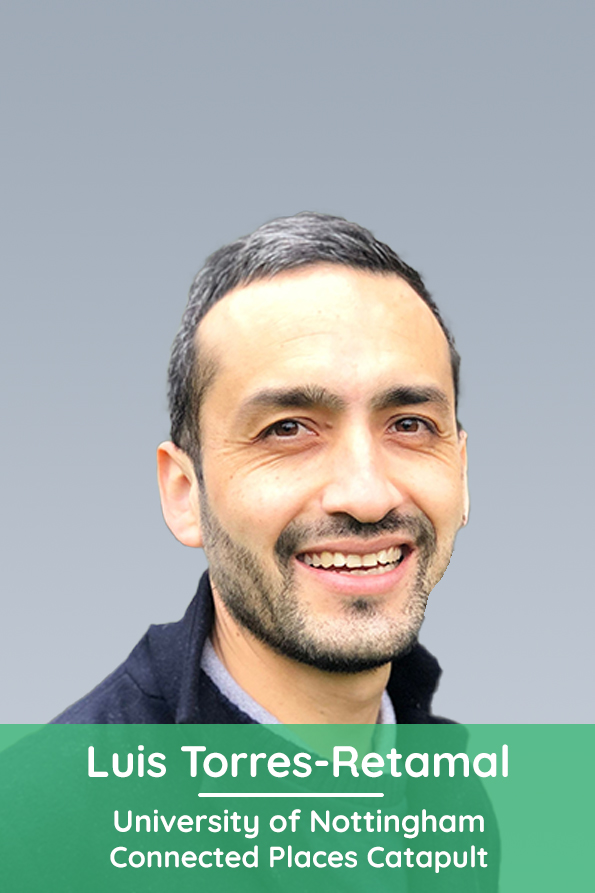
Significant changes in public procurement are underway in the UK to achieve the 2050 Net Zero commitment. From September 2021, prospective suppliers bidding for contracts above £5 million a year are required to commit to the government’s Net Zero target. Also, the UK Clean Growth Strategy also requests Local Authorities to set Net Zero target emissions from 2028. Public procurement can play a critical role in the delivery of local authorities’ pathway to Net Zero as well as supporting suppliers’ alignment to this ambition. However, research by Energy Systems Catapult in 2021 found that public procurement local government’s processes and local authorities’ culture needed substantial change to be aligned with Net Zero ambition. This proposal explores how local authorities can embed circular economy principles into procurement of Net Zero solutions. Our focus is on the development of an implementation framework that aids local authorities in the East Midlands region to understand and follow circular economy principles to foster industry innovations in the transportation sector. The outcome will be a public platform with information and guidance for local authorities across the region and beyond. The project will benefit from a multidisciplinary team from the Business School and the Faculty of Engineering at the University of Nottingham.
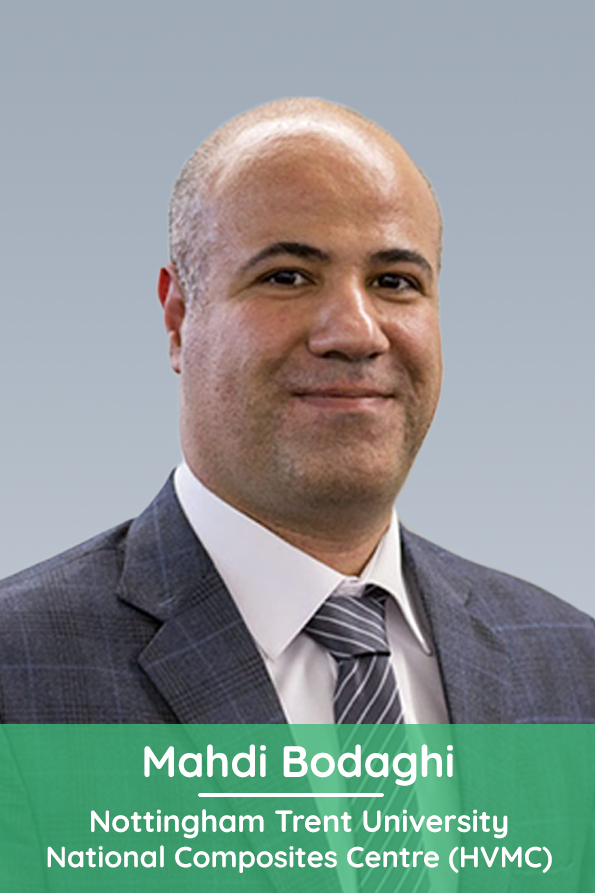
Composites are widely used in industries like aerospace and automotive due to their high strength and low weight. However, despite their high performance, conventional composites raise environmental concerns due to their non-sustainability and substantial waste generation. The BIO-CYCLE project aims to revolutionize the future of composite materials through innovative 3D printing technology and sustainable materials.
This project will focus on developing Continuous Natural Fiber-Reinforced Bio-Composites (CNFRC) using natural reinforcements like flax fibre, bamboo charcoal and biomass chitosan. These eco-friendly materials will be combined with a bio-based matrix using 3D printing technology to create ultra-lightweight and resilient lattice structures. The key objectives are to enhance the mechanical performance of CNFRCs to compete with traditional composites and meet industry requirements for flame-retardancy, durability and sustainability. To achieve this, advanced computer modelling techniques will be employed to design optimized lattice structures that offer exceptional strength and energy absorption. The environmental impact will also be quantified through a comprehensive life cycle assessment.
Through close collaboration with the National Composite Centre and industrial partners, the technology will be validated for real-world applications such as interior car door modules, impact-absorbing helmet liners, and packaging pallet boxes. This project aligns with the UK’s sustainability goals, contributing to the resource efficiency, the reduction of greenhouse gas emissions and promoting a circular economy. The BIO-CYCLE project will lead the way towards greener, more sustainable composites, making a positive impact on various industries and supporting the UK’s journey towards a net-zero carbon future.
The objective is to disseminate learnings from the HySeas programme and to collect information from all parts of the UK marine sector to develop a portfolio of guidance for industry and government, which will assist the transition for the maritime sector towards sustainable practices and fuels. The applicant is almost certainly the only UK academic who has led a team in developing a green hydrogen marine power train, taking vessel design to Classification Approval in Principle stage, and conducting related socio-techno- economic work on the topic – being the first to initiate work in this area (2011).
He was also a lead author of the first macroeconomics paper to assess the value of electric drive train road transport to the UK economy – believed to have strongly influenced the UK Government in terms of ending the sales of fossil- only road vehicles. The work will involve holding a series of workshops with the UK marine sector, sharing the learning from the HySeas programme to date, asking the sector to consider the questions, challenges and opportunities which arise. Information will be collated and used to develop a portfolio of required actions and recommended support mechanisms with a view to supporting the UK high value manufacture and service sector.
Progress will be measurable in terms of number of workshops held, number of parties engaged, the formation of a comprehensive UK wide interest group and written output summarising the collective view of the sector. This work has the potential to considerably accelerate the UK’s green maritime objectives.

The aim of this project is to reduce, even eliminate, the need to landfill or burn fibre reinforced polymer composite components by creating a sustainable, circular manufacturing process that reuses the material over and over again. The process takes a fibre reinforced thermoplastic (FRTP) sheet material and forms it into a structural composite component. When the component reaches the end of its product life, the process returns it back to its original sheet form so it becomes the feedstock for a next generation FRTP component. Applications include rail vehicle bodysides, automotive floorpans and airplane cargo doors. Furthermore, FRTP composites are lighter than equivalent metallic components so less energy is needed to move them from place to place, potentially reducing CO2 emissions.
The forming operation is called HyVR (Hybrid Vacuum Robotic) processing. First, the FRTP sheet is heated to a softening temperature. Next, it is roughly shaped over a mould using vacuum suction. Detailed features then are made using a robot to push a tool into the sheet and dragging it along a path. The formed part is cooled so it stiffens, then taken off the mould and trimmed to the part shape. Large FRTP components can be made using low cost, lightweight moulds since the low vacuum forces do not bend the thin moulds. The process to revert the FRTP component back to a sheet as feedstock is called DeForm and is the opposite of HyVR. This project will focus on HyVR process implementation with DeForm conceptualisation.

The UK government has set an ambitious target of achieving 10 GW of low-carbon hydrogen production capacity by 2030, with at least half from green hydrogen. Low-carbon hydrogen holds significant potential for addressing emissions in hard-to-abate sectors such as aviation. In the production of green hydrogen, water is split into hydrogen and oxygen through electrolysis, utilising electricity generated from renewable energy sources such as wind power. As the UK transitions towards a cleaner energy future, the government has been supporting wind-to-hydrogen projects.
This project aims to investigate the technical and economic feasibility of a power-to-power system that integrates offshore wind turbines, on-site green hydrogen generation using electrolysers, hydrogen storage, and hydrogen fuel cells. The system incorporates innovative elements, including an efficient and cost-effective method to produce pure water for the electrolysis process and novel flow channels for enhanced fuel cell performance.
The desalination method to be employed in this project draws inspiration from the applicant’s previous project, which was shortlisted for the Newton Prize in 2020. The objective of that project was to provide freshwater to rural areas in Egypt. This approach will be leveraged to obtain freshwater for the electrolysis process. On the other hand, numerical studies performed by the applicant have demonstrated that the innovative flow channels have the potential to improve fuel cell performance by up to 20%. By exploring these advancements, the project aims to contribute to the UK’s hydrogen production goals, enhance efficiency, and promote green hydrogen as a sustainable energy solution.

Offshore wind (OSW) represents a key sector in implementing the government’s 2050 Net Zero target. Stakeholders, including OREC, have stressed the critical role of digitalisation in this context, including the use of AI to enable efficient and effective decision making under time pressure and uncertainty. This proposal seeks to explore the role that natural language can play to generate a better understanding of the underlying relations between environmental conditions and faults in OSW assets, increasing explainability and confidence in decisions. Natural language-enabled information access, such as recently ChatGPT, has seen rapid public uptake, but is unsuitable for safety-critical and/or commercially-sensitive settings, due to its lack of ground truth, accountability and risks of data leakage.
The aim is to gain a systematic understanding of the key requirements and human factors that need to be considered to establish natural language as an effective medium of AI-expert communication; develop a pilot AI-system (ChatOSW) from domain documents (technical manuals, maintenance reports, worksheets) that avoids the dangers of general-purpose models through explicit knowledge representation, and establishes the feasibility of a highly domain-focused AI for information-access and decision-support in OSW; and finally, create a comprehensive techno-economic framework to gauge the (cost-)effectiveness of a ChatOSW tool, especially relating to future OSW (and other renewable energy) projects in the UK.

Metal additive manufacturing (AM) is steadily becoming a method of choice in many sectors across the globe and especially in the UK. Sectors such as the manufacture of industrial machinery, aerospace, and automotive industry, among others, exploit the inherent benefits of metal AM. These benefits include a significant reduction in the waste of raw materials and the high level of finished part complexity that can be achieved with metal AM. Also, compared to other manufacturing methods, such as casting, metal AM has a reduced throughput time, which enhances faster technological advancement. Measuring several part properties and process parameters is required to manufacture parts that consistently meet the various application requirements of disparate sectors. Two such properties are the in-process part temperature and residual stress. The temperature of the substrate or the previously deposited layer influences the integrity and dimensional quality of the part. At the same time, uncontrolled residual stresses can lead to distortion or failure of the part. This project aims to create a novel non invasive, non-destructive method of measuring AM parts’ internal temperature and residual stress using laser ultrasound. Currently, this method does not exist for the intended use. Ultrasonic thermometry can be utilised for internal material temperature measurement rather than surface measurement obtainable in existing measurement systems. This will lead to more accurate control of the AM process parameters, reducing material waste and time lost to rework.


The proposed project is a collaborative initiative between the research team from the DIGITLab at the University of Exeter and the Advanced Manufacturing Research Centre (AMRC) aiming at advancing the design engineering process for the manufacturing sector to support the scheme’s ‘Resilience’ priority.
In partnership with the AMRC, we propose to develop: 1) A data-driven design framework to support designers in the use of data to design products tailored for the manufacturing sector; 2) A set of requirements for AI tools for manufacturing and; 3) A toolkit encompassing the data-driven framework and requirements for AI tools, translating academic research to industry. To achieve these, we will run: a Data-driven Workshop with several manufacturing firms and AMRC partners, and present a framework developed as part of the DIGITLab and a recent publication, to understand the use of data in industry; an AI in Design Workshop, based on the currently designed experiment by the research team, to deepen the understanding of the role of AI in the design engineering process, explore the requirements of AI tools, and scope a proposal for funding for tools for using AI to define requirements informing future collaboration; an AI Tomorrow Sandpit to investigate the guidelines for embedding the data-driven framework and AI tools in a toolkit tailored specifically for the manufacturing sector. These will be scoped through follow-on interviews and co- creation sessions. The collaboration will support the researchers in ensuring the research is co-created and grounded with the requirements of end-users and also inform AMRC with their ongoing digital method project.

The need for the world to follow a more carbon-neutral path is clear. Responsibility for achieving this lies not only with policy makers, but with all stakeholders including commercial organisations. Our aviation case study focuses on London Elstree Aerodrome (LEA) which is located in London’s green belt. The aerodrome intends to develop a ‘Jet Zero’ strategy, adopting climate change considerations and solutions to facilitate meeting the UK’s 2050 Net Zero target from the perspective of a small general aviation operation. Science-Based Target initiatives (SBTi) exist but are yet to be widely adopted. Responsible businesses must take the lead in interpretation and application. We aim to show that exploiting SBTi methodology can serve as insight for other small-medium-sized aviation organisations wanting to adopt similar measures.
The academic lead for this 16-month project is the University of Hertfordshire. There are five tasks: the first four involve mapping carbon footprints, exploring carbon reduction measures, analysing pathways, refining Net Zero targets and developing a transition roadmap; the fifth task is related to engagement, delivery and reporting. One of the primary goals is to bring together a cross-functional project team in a number of key areas such as sustainability research, carbon reduction toolkits and digitalisation. Engagement is vital: many of the stakeholders are unlikely to have had any prior involvement in carbon reduction. We draw insights from the Digital Catapult working in this area along with their experience of other emerging technologies such as Distributed Ledger Technologies.
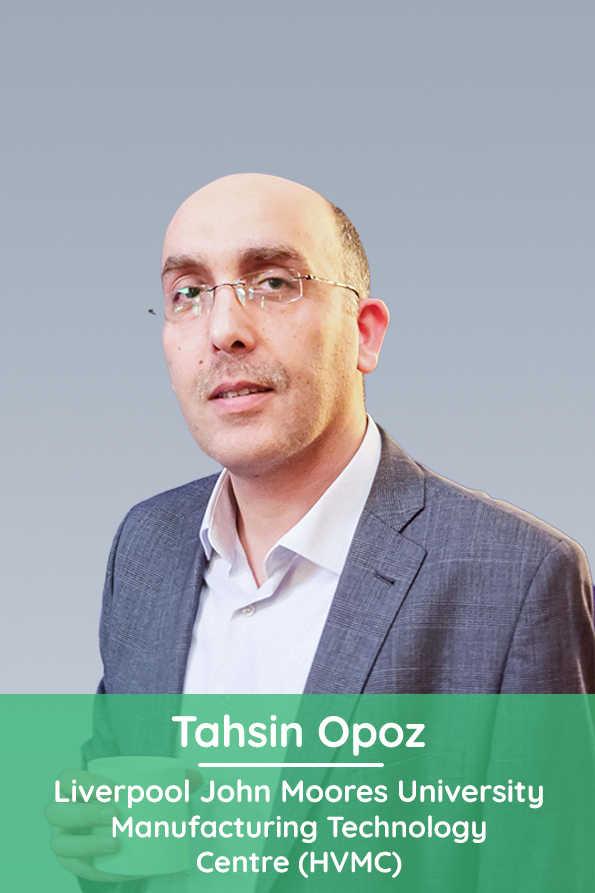
Polycrystalline Diamond (PCD) based tools are vital components in high-value manufacturing, enabling the utilisation of advanced materials such as ceramics and composites across the engineering sector. The synthesis of PCD requires an energy-intensive process, utilising high- pressure-high-temperature apparatus that consumes 36 kWh/ct of electricity. As an ultra-hard material, there are currently no state-of-the-art solutions for refurbishing PCD-based tools. This results in significant wastage of approximately 9.3 million PCD tools/year. This waste, combined with the high energy consumption during the synthesis process, indicates the critical need to develop technologies which facilitate the efficient reuse or refurbishment of these high-value PCD tools.
Conventional methods of reconditioning tools, such as mechanical or electrical-discharge grinding, are unsuitable for brittle PCD due to microcrack generation. Long pulse laser processing results in thermal damage, while ultra-short pulse laser processing is too slow for industrial-scale application. In recent years, water jet-guided (WJG) laser technology has demonstrated exceptional techno- economic performance in machining hard-brittle materials, including diamonds. Based on the WJG laser machining process, this project aims to develop the technologies for enabling the reuse and refurbishment of high-value PCD tools, demonstrating its techno-economic performance to the wider industrial community and thereby promoting sustainability within the manufacturing sector.

Co-LEAD aims to analyse energy consumption patterns and provide personalised, energy-saving recommendations using AI and user-centred design. Central to this project is an innovative platform that optimises energy usage at the individual and household level, significantly supporting the UK’s Net Zero strategy. Instead of disrupting customers’ daily routines, Co-LEAD turns energy efficiency into an achievable goal. It provides a platform for effective energy usage and budget management, without compromising resident comfort. Embracing a collaborative approach, it unites a diverse range of stakeholders, including energy consumers, suppliers, government bodies, and local authorities, in a joint pursuit of sustainability and energy efficiency.
In partnership with the Energy Systems Catapult, we will utilise a vast network of smart homes to test and refine our AI-driven platform. Co-LEAD serves not only as a practical tool to manage energy consumption but also transforms the Net Zero targets from governmental objectives to personalised missions for every UK household. This project also promises to stimulate new business opportunities in the digital economy and foster enhanced interactions between energy providers and consumers. In conclusion, Co-LEAD offers an innovative solution to reduce carbon emissions, manage energy costs, and boost energy-saving literacy. As a vital contribution to the UK’s journey towards sustainability, Co-LEAD holds potential to influence global standards, showing how AI and user-centred design can effectively combat climate change.

Transport emissions significantly degrade the environment, and this problem exacerbates in low- and middle-income countries like India, where motorised transport is considered a status symbol and used even for short distances. Electrifying transport modes would mitigate this issue, but its uptake has been slow in these countries, and the reasons for this need to be thoroughly investigated. This project aims to understand the barriers to the uptake of shared electric micro- mobility in India using the well-established ‘Theory of Planned Behaviour’ and the ‘Unified Theory of Acceptance and Use of Technology’, which characterise intentional behaviour using Attitude, Subjective Norm, Perceived Behavioural Control, and the use of technology. Leveraging the Connected Places Catapult’s trial in Kolkata, India, about 1000 road users will be surveyed to understand their willingness to use a shared micro-mobility mode (i.e., two-wheel electric scooters). Survey data will be used to develop two models: a structural equation model, examining the relationships between sociopsychological factors underlying users’ acceptance and/or technological adoption, and a choice model to estimate the willingness to use two-wheel electric scooter micro-mobility modes. The models will be used to unravel the moderating effects of socioeconomic characteristics and psychological factors in accepting and adopting shared electric micro-mobility modes. Through analysis, the project aims to elicit determinants that discourage use of shared two-wheel electric micro-mobility modes for short distance trips, provide guidelines for increasing their uptake, and suggest pathways for scaling up and transferring the findings to other similar cities in India and beyond.
This project aims to leverage blockchain technology, specifically the implementation of a digital material/product passport (DPP), to drive circular practices and contribute to supply chain Net Zero goals. DPPs, powered by blockchain, provide an immutable record of a product’s lifecycle, enabling verification of authenticity, sustainability, and ethical practices. This fosters trust, responsible practices, and meets consumer expectations. Embracing this technology reshapes supply chain management for a transparent, circular, and sustainable marketplace.
The European Commission’s recent proposal to establish an EU DPP under the Ecodesign for Sustainable Products Regulation highlights the importance of DPPs. However, DPP adoption in the UK is rather limited, with initiatives mostly at pilot stages. From a socio-technical perspective, this research tries to understand how to scale up DPP adoption in supply chains via comparative studies.
Building on the applicant’s leadership in the EPSRC-funded Scalable Circular Supply Chain project for the Built Environment (EP/V042521/1), this work will examine DPP development in sectors where there is a higher level of technology maturity. By collaborating with Digital Catapult’s existing projects on critical mineral tracking and industrial partners, the study further explores how the integrative use of blockchain and other digital technologies such as IoTs and AI supports the establishment of a truly end-to-end supply chain digital twin – crucial for lifecycle assessment and supply chain optimisation ultimately leading to reduced environmental impact.
The main outcome would the development of a comprehensive roadmap, guiding organisations in the successful large-scale implementation of DPPs, therefore leading to sustainable social and environmental outcomes.
Resilience

The project aims at developing novel models and methods for quantifying the vulnerability of transport infrastructure assets to floods. Roads, bridges, culverts, and retaining walls are critical assets required for the functioning of transport infrastructure. Extreme weather events can cause severe damage to these assets, with severe consequences in terms of disruptions, financial losses, and even injuries and fatalities. With the transport sector experiencing increasing challenges in maintaining their assets in good conditions, there is an urgent need to equip agencies and operators with practical tools and criteria to identify the ones that are more likely to fail due to floods and whose failure has the most severe consequences for the functioning of transport networks and other interdependent networks. The project aims to answer this need through the development of fragility models to quantify the probability of failure of transport assets given the intensity of the flood event. These models will be built by exploiting available data concerning the performance of transport assets in past flood events and also by developing mechanical models. The direct and indirect consequences of asset failure, including the impact on interdependent networks, will be also modelled. Finally, cost-effective strategies will be proposed to monitor the functioning of transport assets and to provide warnings about potential failure will be produced. The research outcome will feed into the activity carried out by Connected Places Catapult towards the developed of digital twins for quantifying the resilience of transport infrastructure to flooding.

Managing Train Fleets Maintenance (TFM) is a complex task, considering operational requirements, maintenance depot capacity and resources/spare parts availability. Effective maintenance is crucial to ensuring a safe and reliable railway, whilst achieving an efficient TFM can make a key contribution to the railways’ overall cost-effectiveness. In 2019/20, there were ~3 million passenger train delay minutes caused by train faults; there is a significant opportunity to reduce such delays and costs through an improved TFM system.
The University of Huddersfield’s Institute of Railway Research (IRR) is working towards maintenance scheduling optimisation based on a ‘virtual depot’ workflow tool developed in-house. Whilst the Advanced Manufacturing Research Centre (AMRC, High-Value Manufacturing Catapult) has started developing a train depot simulation tool to manage the movement of trains into and within depots, this project aims to improve the resilience of the train network by developing TFM optimisation tools.
The proposed project will integrate the tools created at the IRR and AMRC, then further enrich their underlying models to create a process that can optimise TFM operations considering depot resources, depot capacity, train movements, and component degradation over time. The main objective is to reduce maintenance cost while maximising the system reliability and components’ life span. Expanding the tool to optimise depot layouts and interfacing with train timetabling will also be considered. The aim is to establish a long-term collaboration between the IRR and AMRC through the JOINT development of innovative tools that can improve the reliability, resilience and operational efficiency of train maintenance and work with our combined network of contacts to implement and deploy those tools in the rail industry.

AI‐Agent Supply Chain networks is a pioneering digital solution tackling Big Demand – a sudden increase in the variety, volume, velocity, veracity, and value of items across Beginning‐of‐Life (BoL) production, In‐Life Spare‐Parts‐On‐Demand (SPOD) and End‐of‐Life (EoL) re‐circulation. Big De‐ mand has been driven by societal change in response to a ‘perfect storm’ of global events including market fragility, mass‐customisation, Supply Chain uncertainty, Corporate Social Responsibility and legislation, National Security, Net Zero, sustainability, and the Circular Economy. Meeting even a small portion of Big Demand using current Supply Chain approaches can take months or years with individuals negotiating across small numbers of suppliers. In contrast, AI‐agents negotiate with everyone in milliseconds enabling them Supply Chains to unite and tackle Big Demand. Gopsill’s Researcher in Residence with the Digital Catapult will take him ‘on‐the‐road’ to demon‐ strate proof‐of‐concept (TRL2/3) AI‐Agent Supply Chain networks. Physical and digital demonstrations of an AI‐Agent AM Supply Chain will be commissioned. They will be presented at Catapult events and used in workshops, surveys, interviews, and demonstrator interaction studies with the objective of eliciting the adoption challenges, value‐add propositions, and opportunities in pulling‐ through AI‐agent Supply Chains. The results will be published via blogs and academic publications, and the relationships formed will create and direct future UKRI research and pull‐through activities enabling the research to reach TRL4/5 status. Following the residence, joint research will be undertaken with a software providers/end user(s) through real‐world trials with the aim of commercialising the solution.

Software quality is a cornerstone to the success of most modern businesses in the digital era. To uphold software quality and reliability, developers are expected to write effective tests for any code they develop so as to prevent regressions and reduce the likelihood of new bugs creeping into production systems. Lack of testing could impact overall costs or even lead to project failures. Unfortunately, developers often perceive writing testing as a tedious and unstimulating task. Thorough testing is time-consuming and reduces the time developers can spend developing new features and products to contribute more directly to business growth. In this project, we will leverage our experience gamifying software testing in higher education in order to develop a gamification approach to integrate effective unit testing practice into the modern, fast-paced software development workflows of the Digital Catapult. We expect the project will have a positive impact on developer productivity and will accelerate product development at the host Catapult. The resulting gamification framework will be tailored to the software development practice of the Catapult yet configurable enough for reuse within different workflows. The project will consist of five phases: collaborative design: led by researcher and involving engineers at host catapult; prototype development: led by researcher partly in research lab; deployment and data collection: led by engineers at host catapult with support from researcher; product refinement: final iteration of bug-fixing and feature refinement followed by implantation and monitoring; and further collaboration scoping, including paper-writing and further collaboration planning.
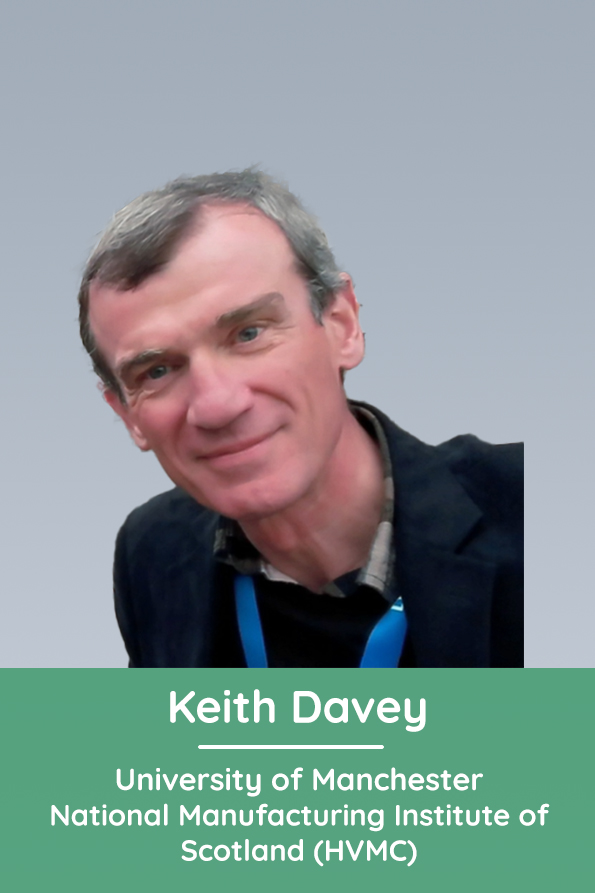
Industry 4.0 is about the integration, development, and application of digital technologies, ranging from sophisticated sensors and advanced robotics to artificial intelligence and digital fabrication, all coalescing to usher in the next industrial revolution. The direction of travel is anticipated to be transformational, yet not all aspects of manufacturing are readily digitisable. The manufacturing world is filled with constraining uncertainties, distortion, and unknowns, yet functional digitisation can benefit product life cycles. This proposal addresses this issue by adopting an alternative worldview of manufacturing, where information is structured to be relatable by quantity, and where recently discovered rules make it possible to relate smaller packets of information to larger packets. Physical laws are relatable through the quantity space, where subspaces can be combined to form a larger metaverse. At the lowest level, metamaterials have properties that are relatable, and laws and materials combine to form metasystems. Rules exist that relate information that apply across all structures, where similar organisations of different sizes are relatable. Although the proposed manufacturing metaverse is conceptual it has real-world relevance and should facilitate the formation of deeper digital information structures, greater connectivity, and transmissibility, machine-informed adaptivity, and ultimately enhanced life cycles and more resilient manufacturing
organisations.

Quality control in Additive Manufacturing (AM) continues to pose significant operational challenges to the adoption of the technology with adverse effects on the resilience of the manufacturing sector. In one hand, inspecting every single part offline with non-destructive testing is clearly impractical in normal production, and on the other hand, online Artificial Intelligence (AI) is fast and scalable but variable performance on detecting defective parts. Recent developments from Scientific Machine Learning allow to couple these two approaches online, in a computationally tractable way that alleviates their respective shortcomings. This project aims to advance AI performance by introducing agile physics-constrained modules in the data processing pipeline to enable better detection and classification of the defects.
The hypothesis is that the performance and credibility of data-driven machine learning to classify the quality of Laser Powder Bed Fusion AM parts can be improved considerably, when imparting a compact surrogate model for the measured optical spectroscopy data of the AM machines at NMIS. Exploiting our recent advances on laser scattering in gas and particulate plumes we will attempt, in a world-first, to port a scattering model to network architectures that detect anomalies in time-series data. This optical model will be computed online using randomisation algorithms that can reduce drastically its complexity. Ultimately, our aim is to develop diagnostics that are practical to integrate to the AM process, as they are trustworthy and reliable in providing intuition on the predicted faults that operators can interpret.

In the aerospace, defence and automotive industries, customers increasingly desire more than the production and provision of goods, and often require ensured support with through-life services. Original equipment manufacturers (OEMS) operating in these industries are increasingly reliant on their spare parts supply chains to satisfy customers and deliver on contractual responsibilities in the through-life service market. It is essential resilience is built into these supply chains to ensure business continuity in these markets. In recent times spare parts supply chains have been hampered by disruptions, hindering their ability to deliver spare parts on time and in the right quantity to their customers. Additive manufacturing (AM), an emerging production technology, has the potential to enhance the organisation’s ability to respond flexibly, more dependably and with faster lead times than traditional supply chains without OEMs needing to hold costly inventory as these can be stored digitally. However, adoption of AM has been low and barriers to its use within spare parts supply chains remain significant. The aim of this project is to translate and advance the research from the Responsive Additive Manufacturing to Overcome Natural and Attack based disruption [EP/V051040/1] with the Digital Catapult spare parts supply chain testbed. The outputs from RAMONA will be further refined with the Digital Catapult and industry partners to advance it from its low TRL level into a packaged resilience model that reconfigures AM supply chains once disrupted and technical cyber solutions to protect against disruption for industry stakeholders organisations.
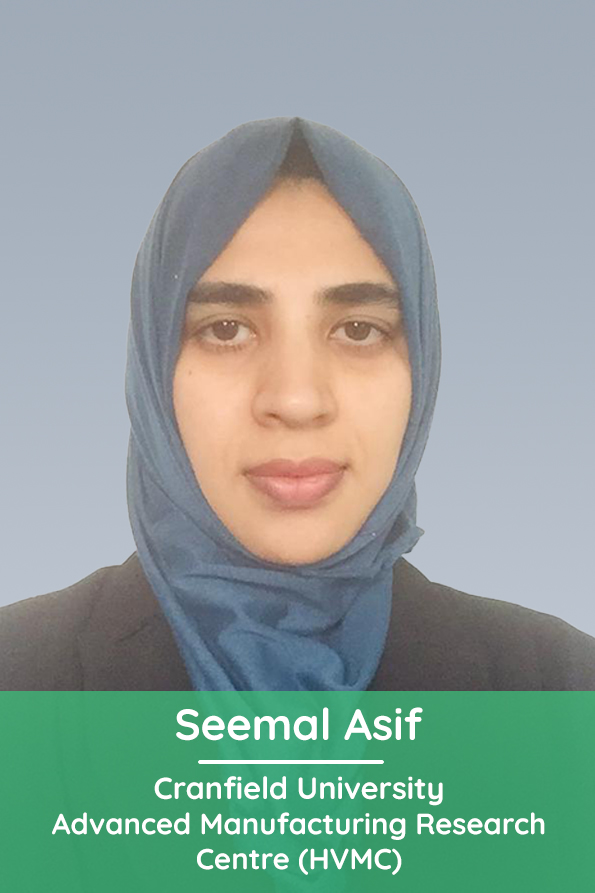
The integration of external metrology systems holds significant potential for enhancing industrial robotics’ performance and process resilience in manufacturing. However, complex integration challenges due to costs and intricacies persist. To address this, the proposed idea aims to develop a framework for automated connection between robotic cells and shared laser trackers, streamlining measurement efficiency and accuracy. The framework leverages the advantages of the robot-cell-reference, establishing a unified coordinate system that aligns with the metrology equipment and the workpiece under scrutiny. This alignment ensures precise and accurate measurement of workpiece features, facilitating seamless communication between the robot and the metrology devices.
The proposed integration can notably advance measurement accuracy and communication in industrial robotics, employing the Universal-Spatial-Metrology-Network (USMN) to counter measurement uncertainties. This system can benefit industries involved in large-scale measurement processes, like commercial airplane production and shipbuilding, where multiple measurement instruments or repeated repositioning of a single instrument within the measurement volume are often required to gather essential data.
The framework eliminates need for specialised scripting, facilitating robotic measurements through automated connections and metrology setup. Integration with Factory+, which is AMRC’s open framework for data-lifecycle, ensures data availability, analysis, quality control, and flexibility. This amalgamation optimises manufacturing processes, positioning it as an asset for industrial robotics.
This project bridges the gap in automatic tracker connectivity for industrial robots, integrating them seamlessly into Factory+. The primary aim is to enhance aerospace industrial robot accuracy. Streamlining large-volume metrology integration will provide essential feedback to enhance robot precision and performance, solidifying the project’s significance.

Fully connected mesh networks offer many advantages, such as an arbitrary topology with self- healing and self-organising properties. These improve the redundancy and resilience of the network in case of outages due to various events. Protocols and technology for such networks already exist at low frequencies, however they have low data rates, high delay, and are mainly used for stationary sensors. Modern and future wireless communication standards, such as 5G/6G and Non-Terrestrial Networks are realised mainly as point-to-point, high data rate links, often in a star topology. Implementing mesh networks on top of these technologies can offer improved performance and adaptability for these communication systems and their users.
Applications for such mesh networks include uninterrupted, beyond visual line-of-sight broadband communication and real-time control for swarms of autonomous robots, satellite clusters with distributed functionality, and interplanetary networks. They can also enable seamless and dynamic interoperability of satellites, drones, and high-altitude platform stations (HAPS) with ground-based communications networks. Making these a reality would require advancements in RF and digital electronics, their integration with robotic ecosystems in terms of software, novel antenna arrays for omnidirectional coverage, and new algorithms and protocols. Improved energy efficiency will also be crucial. This project will lay the foundations for such mesh networks by collaborating with Satellite Applications Catapult staff and using their hardware and software facilities to work on design and prototype activities. These will focus on exploring the relevant differences between satellites and drones, strategies for developing an integrated communications infrastructure, and setting up hardware test beds.
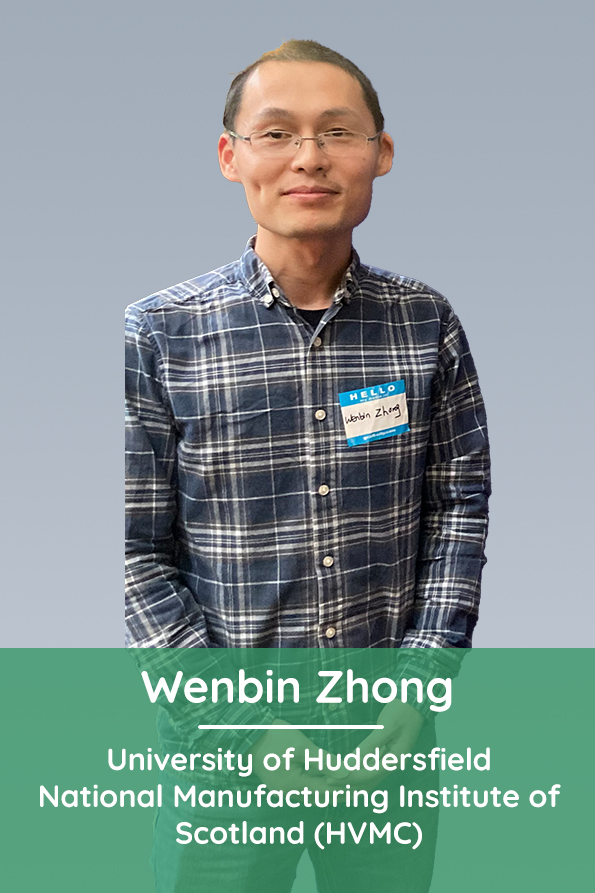
Freefrom surfaces generated by ultra-precision 5-axis machines are increasingly in demand invarious fields, such as moulds for AR/VR lenses, knee and hip joint implants for personal health, and telescopes for space exploration. These high value products are usually made of difficult-to-cut materials and have tight tolerance on form accuracy and surface finish. Compared with conventional offline metrology methods, on-machine surface measurement (OMSM) can avoid the re-clamping error and keep the datum of the workpiece for further compensation machining. Therefore, OMSM is an enabling technology to improve the metrology efficiency and machining accuracy of these products. However, the integration of OMSM with ultra-precision 5-axis machines is a huge challenge due to the complexity of data synchronisation and processing. This project aims to develop a comprehensive solution comprising: 1) hardware for synchronising sensor measurement data and machine coordinate data; 2) software algorithms for data acquisition, scanning path planning, surface reconstruction and characterization; 3) strategies for calibration and error map generation. The proposed research lies at the intersection of manufacturing and metrology, and aligns with the EPSRC’s manufacturing the future portfolio. The outcomes of this project will enhance the resilience of UK high value manufacturing and its associated industry sectors, including optics, medical devices, space, reducing the need for outsourcing and import reliance.

Well-oiled and efficient supply chains are critical for the UK to maintain its world 9th position in terms of manufacturing output. Providing visibility of inventory has been identified as one of the most significant challenges in supply chains faced by business in the UK, especially with continued disruption, increased costs, and the need to be resilient to shocks and stresses. However, it is challenging to monitor inventory usage manually or with existing wireless sensor network techniques due to cost and the presence of various forms, sizes, and materials of objects. In the meantime, deep learning has demonstrated promising performance in several tasks like image classification on ImageNet dataset with well curated data and considerable computing resources. This Researchers in Residence project will work on developing and demonstrating vision based inventory management with deep learning. The first step will be to design deep learning models for object detection and the associated model compression methods. The next step is to build an image dataset with category labels with Digital Catapult and learn these models with the images. Then, the learned models will be evaluated on test images and deployed onto the edge platform for validation. If successful, this project will contribute to the adoption of computer vision for inventory management and beyond in commercial supply chains.
Healthcare & Wellbeing

A growing number of diseases are being targeted by adeno-associated virus (AAV) therapies, but there remain significant stumbling blocks for cost-effective ways of manufacturing and formulating the drug product. The Cell and Gene Therapy Catapult (CGT Catapult) has invested significantly in developing a platform AAV process that generates bulk drug substance and is scalable under good manufacturing practice (GMP). Critical to this success is obtaining a concentrated AAV formulation within a small pH and isotonicity window that maintains physical stability to assure the safety and efficacy of the final drug product. While physical degradation pathways remain poorly understood, one significant contribution is through particulate formation especially at titres needed in the drug product. Dr Curtis has expertise in analyzing, predicting, and controlling aggregate and particle formation of biologicals gained through working with various biopharmaceutical companies. Curtis will work with GCT Catapult to develop high-value analytical data, predominantly using light scattering technologies, for identifying pathways involved in aggregate formation. From the mechanistic understanding, mathematical models will be proposed to guide manufacturers for developing methods to minimize loss of AAV potency during formulation, fill, packaging, and storage steps. The project is timely and high impact given our poor understanding of AAV stability despite the importance of AAV therapies in treating disease.
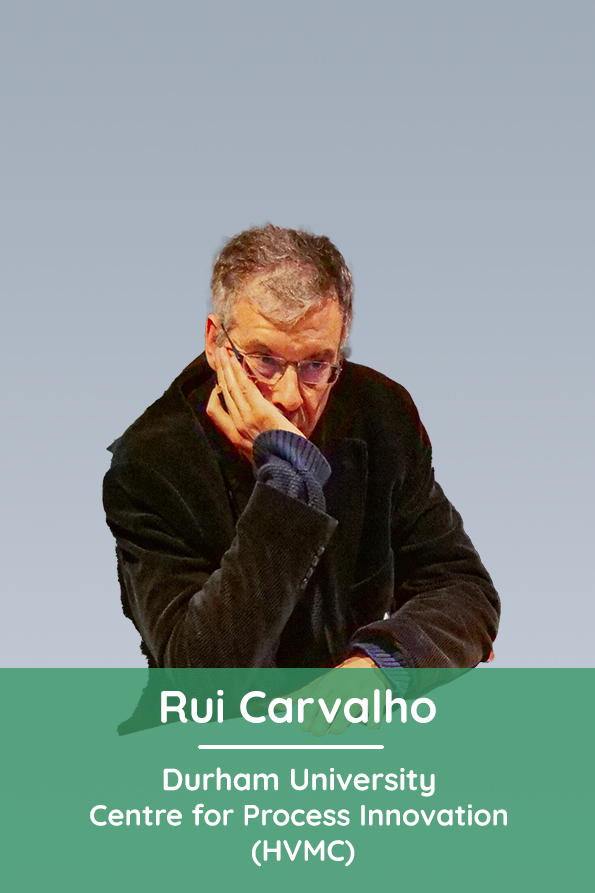
This project seeks to revolutionise the production of biologics – a type of pharmaceutical drug – by using advanced computational and statistical techniques to optimise a key step in their manufacture, known as downstream purification. The research focuses on optimising the process of chromatography, a key method used in purifying biologics that currently requires extensive time and resources to perfect due to its many variables. By employing computational models that can predict the optimal conditions for chromatography, this project aims to significantly reduce the time and resources required for optimisation.
The project will also contribute to the shift towards platform analytics in biologics production, a more scalable and efficient approach compared to the current product-focused method. It aims to do this by developing predictive models that are independent of specific products and can accurately capture and predict the behaviour of impurities in the process.
Key to this research is applying a technique known as conformal prediction to regularised regression models of chromatography, which can provide accurate measures of prediction uncertainty. This could significantly enhance our understanding and improvement of purification processes, help to better guide control and operating strategies, and ensure regulatory compliance. The research comprises two major work packages. The first will establish a model that predicts the yield of impurities based on specific predictors, like the characteristics of the impurity and specifics of the purification process. The second will implement conformal prediction methods to provide robust measures of prediction uncertainty.

Bacteriophage (phage) therapy is the use of viruses that infect and kill bacteria. With rising antimicrobial resistance, phage therapy is a promising alternative therapeutic. Recently, the UK Parliament’s Science and Technology Committee launched an inquiry into evidence for the safety and efficacy of phages. A systematic review of clinical data showed that phages are safe and 87% of 1461 patients receiving phages achieved bacterial eradication. Countries including Belgium and Australia are currently using phages clinically. In the UK, phages are classed as a biological medicine and not currently licensed for clinical use . A small number of individuals have been treated with phages under “compassionate use” using phages sourced from outside the UK. Phage therapy in the UK will not progress without the development of manufacturing processes in accordance with Good Manufacturing Practice (GMP) .
At the University of Liverpool (UoL) we have identified novel phages against Pseudomonas aeruginosa, a major pathogen identified by the World Health Organisation as a priority for new therapeutics. This project aims to address the manufacturing barriers within the UK through exchange of knowledge and expertise between the Centre for Process Innovation (CPI), the Medicines Discovery Catapult (MDC) and University of Liverpool to enable the manufacture and scale-up of high-quality novel phages. Currently, industry associated with phage is limited in the UK. This project will enable the UK to be more resilient in the fight against antibiotic resistant bacteria and potentially support the emergence of phage-based industries by creating expertise and facilities in phage manufacture.
The human impacts of climate change, particularly amongst the most vulnerable communities, are the focus of this proposed study. The displacement induced by environmental crises is an escalating global issue, and the intention is to address it through in-depth analysis and strategic interventions. Satellite technology is to be utilised in this project, where the monitoring and evaluation of environmental changes caused by extreme weather events, such as hurricanes, floods, and droughts, will be undertaken. A unique method has been incorporated into our approach, involving the observation of night-time lighting in affected areas, which is believed to serve as a significant indicator of infrastructure damage and the speed of recovery.
Moreover, satellite data will be integrated with resources like the Migration Data Portal, with an aim to expose the ‘push’ factors behind climate-induced displacement. This approach is anticipated to reveal the complex relationship between environmental degradation and human migration patterns. The intention is to extend the scope of analysis to quantify the health and economic impacts, employing a blend of medical and economic data to understand the range of challenges these communities face. The project will also include an examination of weather events in various regions which did not result in displacement, aiming to identify the contributing factors to resilience and recovery.
Ultimately, the objective is to find links between changes in environment, health, economy, and migration to deepen our understanding of climate-induced displacement, identify high-impact interventions that can enhance resilience, and mitigate impacts on vulnerable communities, aligning with the Sustainable Earth mission. This endeavour aspires to catalyse change and foster sustainable futures.